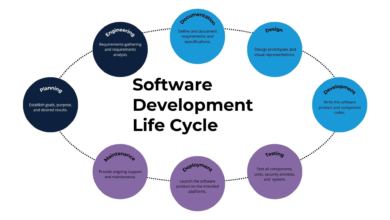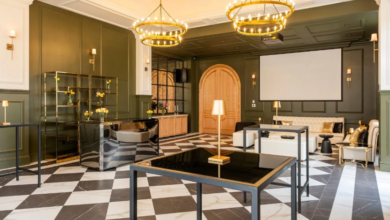How to Choose the Right Paso Robles Winery to Visit

Thinking about a trip to Paso Robles wine country? It’s a fantastic place with so many wineries, it can be a little overwhelming to pick just one to visit. Whether you’re looking for a specific type of wine, a certain kind of atmosphere, or just want to explore the beautiful scenery, there’s a perfect Paso Robles winery out there for you. We’ll help you figure out how to find it.
Key Takeaways
- Paso Robles offers diverse wine trails, like Highway 46 West for coastal vibes and Adelaida District for deep-rooted history and unique soils.
- Consider the overall experience when choosing a winery, looking at wine quality, staff knowledge, and the winery’s ambiance.
- Paso Robles’ terroir varies greatly, with different districts excelling in specific varietals like Rhône blends in Adelaida and Willow Creek, and Bordeaux varietals on the Eastside.
- Pioneering wineries like Tablas Creek Vineyard and Laetitia Winery offer unique contributions to the region’s wine scene.
- Planning your visit by using wine trails, considering guided tours, and making reservations can make your paso robles winery exploration much smoother.
Explore Paso Robles Winery Trails
Paso Robles Wine Country is spread out, and trying to see it all at once can be a lot. That’s where the idea of wine trails comes in handy. Think of them as curated routes that help you explore different parts of the region without getting lost or feeling overwhelmed. Each trail has its own vibe and focuses on certain types of wines or experiences. It’s a smart way to plan your visits and really get a feel for what makes each area special.
Highway 46 West: Vineyards to the Beach
This is a really popular route, and for good reason. It’s super scenic, with vineyards lining the road, and it gets you pretty close to the coast. The ocean breezes here make a big difference in the grapes, leading to some really balanced and elegant wines, especially Pinot Noir. You’ll find a lot of smaller, boutique wineries along this stretch. It’s a great place to start if you like beautiful views and a relaxed atmosphere.
Downtown Wineries: The Center of It All
If you prefer to park your car and walk, the downtown area is your spot. It’s packed with tasting rooms, and you can easily hop between them. Plus, after your wine tasting, you’re right in the middle of shops, restaurants, and art galleries. It’s convenient and gives you a taste of the town along with the wine.
Adelaida District: Roots Run Deep
This area is for the history buffs and those who really care about terroir. It’s a bit more rugged, with hills and unique soil types, including chalky rock and limestone. Wineries here often focus on small-batch, handcrafted wines, especially Rhône and Bordeaux styles. You might even see some cool old oak trees with moss hanging from them, giving it a real sense of history.
Willow Creek District: Calcareous Soils and Coastal Influence
Also on the west side, this district is known for its limestone-rich soils and the cooling effect from the ocean. It’s a prime spot for Rhône varietals like Syrah and Grenache. Many wineries here also offer amazing views, so if you like a good panorama with your wine, this is the place to be. You can find a map of the SLO Farm Trail which includes wineries in this area, like AmByth Estate.
Templeton Gap District: Zinfandel and Friendly Atmospheres
Located in the coastal range, this district gets a nice mix of cool marine air and warm sunshine. This is a great area for Zinfandel and Rhône-style wines. The wineries tend to have a really friendly and laid-back vibe, making it a good choice if you’re looking for a relaxed tasting experience.
Backroads Wineries: Cowboy Country Meets Wine Country
If you like getting off the main roads, this trail is for you. It winds through rolling hills, past ranches and olive farms. You’ll find welcoming tasting rooms and cozy spots, often with dry-farmed vineyards and old oak trees. Still Waters Vineyard is a good example, offering estate wines and olive oil from old Spanish olive trees. It’s a peaceful escape.
Highway 46 East: Adventure and Wine Caves
This trail is all about adventure. You can find wine caves, hot air balloon rides, and horseback riding here. It’s home to both small family estates and larger wineries, with a good selection of bold reds like Cabernet Sauvignon and Zinfandel, thanks to the long, warm growing season. Eberle Winery is famous for its wine caves and Cabernet Sauvignon, offering a unique underground tasting experience.
Choosing a Paso Robles Winery Experience
When you’re planning a trip to Paso Robles, picking the right winery can feel like a big decision, especially with so many great places to choose from. It’s not just about the wine itself, though that’s certainly important. You’ll want to think about the whole package – what kind of vibe are you going for? Are you looking for a big, bustling place with lots of activity, or a smaller, more intimate spot where you can really connect with the people and the wine? Focusing on the complete experience will make your visit much more memorable.
Focus on the Complete Experience
Think about what makes a winery visit enjoyable for you. Is it the stunning views, the history of the place, or maybe the chance to try something really unique? Some people love the idea of a winery that offers more than just a tasting, like live music or beautiful gardens to wander through. Others prefer a straightforward, no-frills approach focused purely on the wine. It’s all about finding what fits your personal style and what you hope to get out of your day.
Consider Boutique Wineries
While the larger, well-known wineries have their appeal, don’t overlook the smaller, boutique operations. These places often have a really personal touch. You might find the winemakers themselves pouring your wine, ready to share their passion and stories. Boutique wineries tend to focus on quality over quantity, often producing handcrafted wines that really showcase the unique character of Paso Robles. It’s a great way to discover hidden gems and support smaller businesses.
The Importance of Tasting Staff
Don’t underestimate the impact of the tasting room staff. A knowledgeable and friendly team can truly transform a good tasting into a great one. They’re the ones who can guide you through the wines, explain the nuances of the terroir, and make you feel welcome. Good staff can answer your questions, offer food pairings, and generally make the experience more engaging and educational. A great tasting staff really makes you feel like you’re getting the inside scoop on the winery and its wines. You can find some fantastic wineries by exploring the Paso Robles wine trails.
When you’re deciding where to go, think about what kind of atmosphere you’re looking for. Some places are really lively, while others are super quiet and relaxed. It’s good to have an idea of what you want before you start booking things.
Understanding Paso Robles Wine Terroir
Understanding the land where the grapes grow is a big part of picking a winery in Paso Robles. It really affects how the wine tastes.
Microclimates and Soil Types
Paso Robles isn’t just one big wine area; it’s actually made up of several smaller regions, each with its own vibe. These areas have different weather patterns and soil, which is called terroir. For example, the west side of Paso, like the Willow Creek District, gets a lot of cool air from the ocean. This makes the soil there different, often with lots of limestone, and it’s great for grapes like Syrah and Grenache. On the other hand, the east side tends to be warmer and drier, which is perfect for grapes like Zinfandel and Cabernet Sauvignon. The soils out east are often alluvial, meaning they were formed by rivers over time, and can be quite rich.
Rhône Varietals in Adelaida and Willow Creek
If you’re into Rhône-style wines, you’ll want to check out the Adelaida and Willow Creek districts. These areas are known for their cooler temperatures and unique soils, which really help grapes like Grenache, Syrah, and Mourvèdre shine. The Adelaida District, in particular, is in the hills and has soils with ancient marine sediment, which can give the wines a real sense of place. You’ll find wineries here that focus on small-batch, handcrafted wines that really show off the land. It’s a great spot to explore if you appreciate wines with complexity and character.
Bordeaux Varietals on the Eastside
When you head to the east side of Paso Robles, especially along Highway 46 East, you’ll find a different story. This area gets more sun and heat, which is ideal for Bordeaux varietals like Cabernet Sauvignon, Merlot, and Petit Verdot. The soils here are often alluvial, contributing to the concentration and richness of the wines. Many wineries on the eastside are known for their bold reds that ripen beautifully in the long, warm growing season. If you’re looking for powerful, age-worthy wines, this is definitely the part of Paso to explore. The eastern part of Paso Robles AVA features alluvial and calcareous soils, which impart rich, concentrated flavors to the wines produced there.
The specific combination of climate, soil, and elevation in each of Paso’s districts creates a unique fingerprint on the grapes grown. This is why visiting different areas can lead to such distinct tasting experiences, even when tasting the same grape varietal.
What Makes a Great Paso Robles Winery Visit
Wine Quality and Consistency
When you’re picking a winery, the wine itself has to be good, right? It’s not just about the fancy building or the nice view, though those help. You want to taste wines that are well-made, balanced, and taste like they belong to Paso Robles. Some places just nail it every time, whether it’s their flagship red or a special white they only release once a year. It’s that consistent quality that makes you want to come back or tell your friends about it. Think about what you like – do you prefer bold reds that really pack a punch, or something lighter and more delicate? Knowing that helps narrow down where to go.
Informative Tasting Experiences
Beyond just pouring wine, a great tasting experience is about learning something new. The people pouring the wine, the tasting staff, can really make or break your visit. Are they knowledgeable about the wines, the region, and the winemaking process? Can they answer your questions without making you feel silly? A good staff member can tell you the story behind the wine, explain why it tastes the way it does, and maybe even suggest food pairings. It’s like getting a mini-lesson in wine, and it makes the tasting so much more interesting. You want to feel welcomed and engaged, not rushed or ignored.
Winery Ambiance and Beauty
Let’s be honest, the setting matters. Paso Robles has some seriously beautiful wineries, from rustic farmhouses to modern architectural marvels. The ambiance contributes a lot to the overall enjoyment. Is it a place where you can relax, take in the scenery, and really soak up the wine country vibe? Maybe it has a lovely patio overlooking the vineyards, or perhaps a cozy indoor space perfect for a cooler day. The beauty of the place, combined with a friendly atmosphere, makes the whole experience memorable. It’s that feeling of being somewhere special, where you can just unwind and enjoy the moment.
Pioneering Paso Robles Wineries
When you think about Paso Robles wine, some names just pop up because they were there from the start, really shaping what the region is known for today. These places didn’t just make wine; they helped build the whole scene.
Tablas Creek Vineyard: Rhone Movement Pioneer
Tablas Creek Vineyard is a big deal in Paso Robles, especially if you’re into Rhône-style wines. They were one of the first to really bring Rhône grape varieties to the area, introducing nine different types that weren’t common here before. They’re also pioneers in sustainable farming, being the first in the area to be certified Biodynamic and one of the first anywhere to be Regenerative Organic. It’s pretty cool that they focus on educating visitors and sharing what they know with other wineries. The place itself is really welcoming, with a nice patio overlooking the vineyards. Their tasting room feels warm and inviting, and the staff really knows their stuff, making the tasting a learning experience. They get their grape cuttings from a famous estate in France, Chateau de Beaucastel, which is pretty neat. Their flagship blends, Esprit de Tablas and Esprit de Tablas Blanc, are made from the best grapes grown on their estate.
Laetitia Winery: Sparkling Wines and Consistency
Laetitia Winery is another spot that has made a name for itself, particularly with its sparkling wines. They’ve been making these wines for a long time, and they’ve gotten really good at it, showing a lot of consistency year after year. It’s not always easy to make great sparkling wine, so their dedication really shows. They’ve been a steady presence in the Paso Robles wine community, contributing to the region’s reputation for quality.
Unique Paso Robles Winery Offerings
Paso Robles isn’t just about the wine itself; it’s also about the unique experiences wineries offer. Some places really go the extra mile to make your visit memorable, blending great wine with something a little different. It’s these kinds of spots that often stick with you long after you’ve left.
Chronic Cellars: Bold Blends and Lawn Bowling
If you’re looking for a winery that doesn’t take itself too seriously, check out Chronic Cellars. They’re known for their bold blends that definitely stand out. What makes them really unique, though? They’ve got lawn bowling! It’s a fun, casual way to spend an afternoon, chat with other visitors, and enjoy some seriously good wine. It’s a great way to break the ice and meet new people, all while sipping on some of Paso’s finest. You can even buy wine online from them if you discover a favorite you want to take home.
Eberle Winery: Wine Caves and Cabernet Sauvignon
Eberle Winery offers a classic Paso Robles experience, especially if you’re a fan of Cabernet Sauvignon. What sets Eberle apart are its impressive wine caves. Taking a tour through these cool, underground cellars is pretty fascinating and gives you a real sense of the winemaking process. It’s a cool escape from the California sun, and the history behind the caves adds another layer to the visit. They’ve been around for a while and have a solid reputation for quality.
Still Waters Vineyard: Rural Beauty and Olive Oil
For a more laid-back, rural vibe, Still Waters Vineyard is a fantastic choice. Nestled in the countryside, it offers beautiful views and a peaceful atmosphere. Beyond their wines, they also produce olive oil, which is a nice bonus. It’s a chance to experience a different side of Paso Robles agriculture. The setting is really serene, making it a perfect spot to just relax and soak in the scenery. It feels like a true escape from the everyday hustle.
Planning Your Paso Robles Winery Tour
So, you’ve decided to explore Paso Robles wine country. Awesome choice! But with so many wineries, where do you even start? Don’t get overwhelmed. The key is to have a plan. Thinking about how you want to spend your time makes a huge difference. It’s not just about tasting wine; it’s about the whole experience.
Utilize Wine Trails for Easy Exploration
Think of wine trails as curated routes through Paso Robles. They group wineries by location or theme, making it way simpler to get around. Instead of bouncing all over the place, you can focus on a specific area. For example, Highway 46 West is known for its scenic beauty and wineries close to the coast, often featuring Pinot Noir. If you’re into history and rugged landscapes, the Adelaida District is your spot, with wineries known for their unique soils and small-batch wines. Each trail has its own vibe, so pick one that matches what you’re looking for. It really cuts down on driving time and lets you actually enjoy the places you visit.
Consider Guided Tours for Convenience
If driving and figuring out routes sounds like too much work, a guided tour might be perfect. Companies offer various tours, from vintage sidecar adventures to comfortable van rides. They handle all the driving and often have relationships with wineries, sometimes getting you access to special tastings or experiences. It’s a great way to relax and let someone else manage the logistics. You can just sit back, enjoy the scenery, and learn about the area without worrying about parking or directions. Plus, you can usually enjoy a few extra sips knowing you don’t have to drive.
Make Reservations in Advance
This is a big one, especially these days. Many wineries, particularly the smaller, popular ones, require reservations for tastings. It’s not like it used to be where you could just show up. Booking ahead guarantees your spot and often means you’ll get a more personalized experience. Check the winery’s website or give them a call before you go. Some places fill up weeks or even months in advance, especially on weekends or during peak season. Doing this little bit of homework beforehand saves you from disappointment and makes your visit much smoother.
Finding Your Perfect Paso Robles Pour
So, Paso Robles has a lot to offer, and picking just one spot can feel like a lot. But really, that’s part of the fun. Whether you’re drawn to the coastal breezes influencing wines on Highway 46 West, the easy strolls and shops downtown, the historic vibes and unique soils of the Adelaida District, or the adventurous spirit of Highway 46 East, there’s a trail or a vibe for everyone. Don’t stress too much about finding the ‘absolute best.’ Instead, think about what kind of day you want to have. Do you want amazing views? A lively atmosphere? A quiet escape? Focus on what sounds good to you, maybe try a wine trail or two, and remember that the people you’re with and the memories you make are just as important as the wine itself. Cheers to your Paso Robles adventure!
Frequently Asked Questions
What are the different wine trails in Paso Robles?
Paso Robles has many different wine trails, like Highway 46 West, which is close to the beach and has many small wineries. The downtown area has lots of tasting rooms you can walk to. The Adelaida District is known for its history and special soils, while Willow Creek has great views and wines. Templeton Gap is good for Zinfandel and has a friendly vibe. You can also find wineries on backroads and along Highway 46 East, which has wine caves and offers more adventurous activities.
How should I choose a winery for the best experience?
When picking a winery, think about the whole experience, not just the wine. Consider the atmosphere, how nice the staff is, and if the place itself is beautiful or comfortable. Sometimes, smaller, unique wineries offer a more special visit than the bigger, more famous ones.
What makes the wines in Paso Robles taste so different?
Paso Robles has many different types of soil and weather patterns, called microclimates, in its various wine regions. For example, the Adelaida and Willow Creek areas are great for Rhône wines because of their cool weather and special soil, while the east side is better for Bordeaux wines due to its warmer climate.
What makes a winery visit really good?
A great winery visit means enjoying high-quality wine that tastes good every time you try it. The staff should be friendly and know a lot about the wine, making the tasting interesting. The place should also be nice to look at and feel comfortable, adding to the overall enjoyment.
Can you tell me about some important or unique wineries in Paso Robles?
Tablas Creek Vineyard is famous for helping start the Rhône wine trend in California and was one of the first to be certified as organic and regenerative. They focus on teaching visitors about wine and offer relaxing outdoor spaces. Laetitia Winery is known for its consistent quality, especially with sparkling wines, and is a nice spot for a picnic.
Should I make reservations or plan my winery visits ahead of time?
Yes, it’s a good idea to book your tasting times in advance, especially on busy weekends. Using the wine trails can help you plan your visits easily, and some companies offer guided tours so you don’t have to worry about driving or planning.





